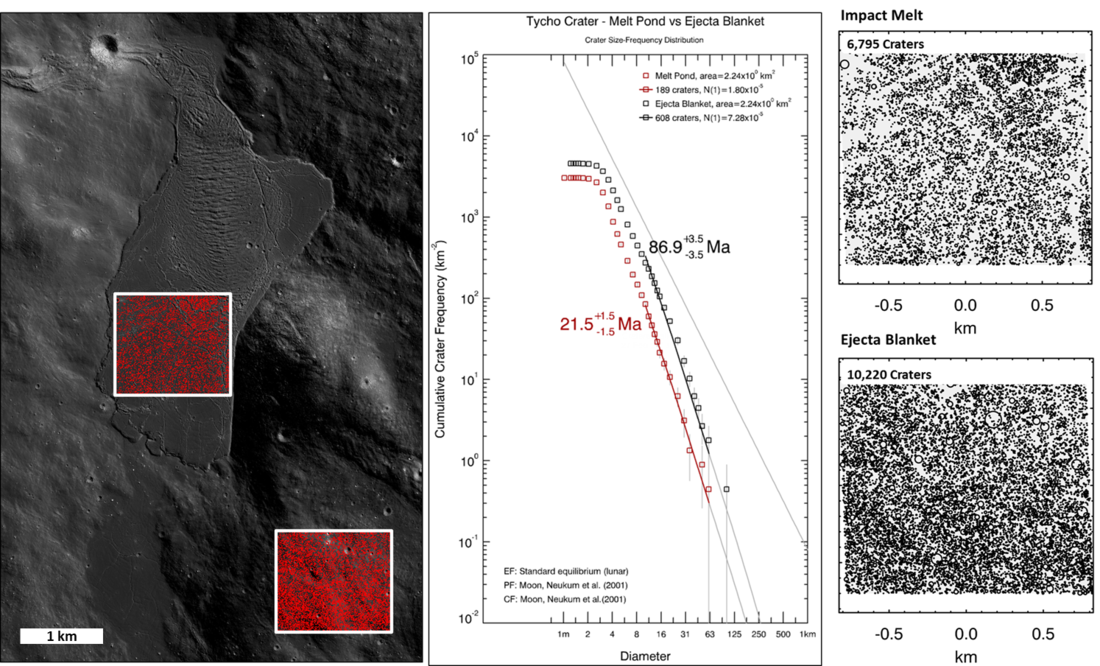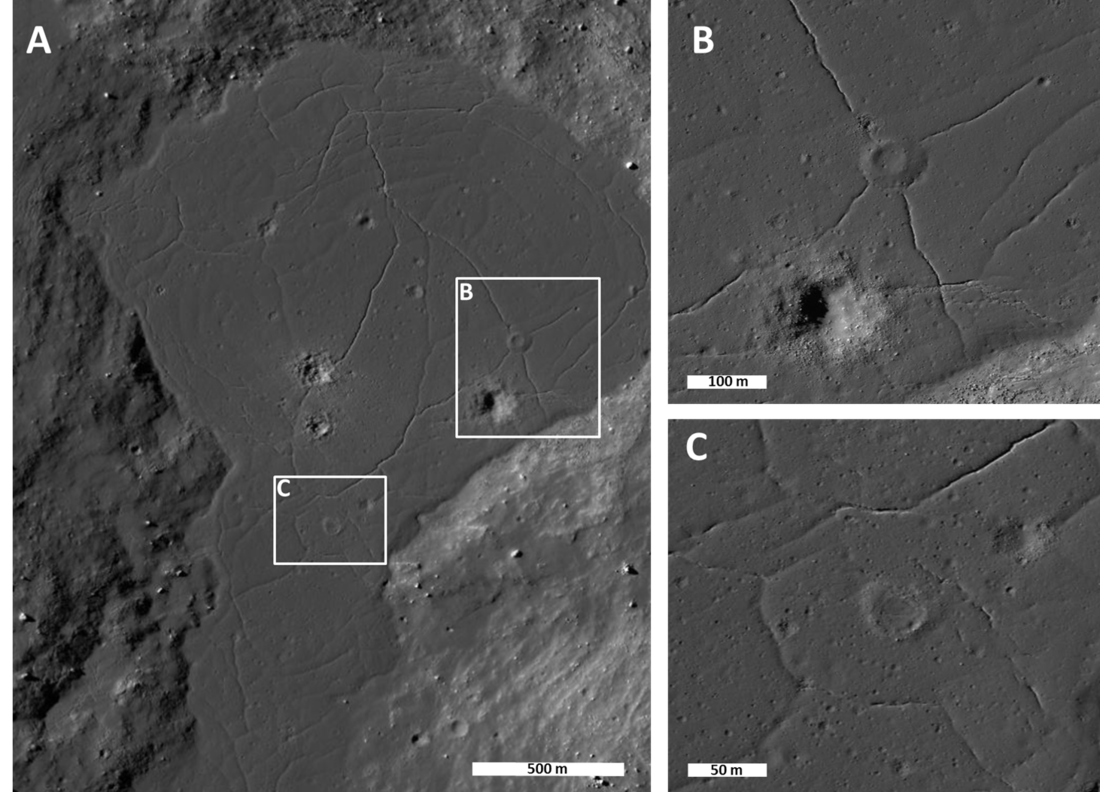
The formation of an impact crater is a highly energetic event that blasts a hole in the surface and deposits the material excavated around the crater as an ejecta blanket. Since the ejecta moves radially outward from the point of impact quite rapidly, it smooths the area around the crater as it reimpacts the surface. This process is known as ballistic sedimentation.
In addition, impacts toss out large chunks of debris that arc over and impact the lunar surface, sometimes hundreds or even thousands of kilometers from the new-born crater. These "secondary impacts" excavate new craters known, not surprisingly, as "secondaries."
It has long been thought that the processes of ejecta emplacement and ballistic sedimentation completely resurface the area within about one crater radius of a "parent" crater, leaving it as a "clean slate." Scientists have long assumed that this clean-state surface - called the "continuous ejecta blanket" - could be used to estimate a crater's age. They believed, quite logically, that by counting the the number of small primary craters in the resurfaced area – that is, the small craters excavated since the clean-slate surface was created – they could estimate the age of the parent crater by using the density of craters to model the age.
But what if ejecta blankets aren’t completely re-surfaced by ejecta emplacement processes? What if they contain small secondary craters excavated by late-arriving ejecta from the parent crater’s formation? If this were so, we would no longer have available the clean slate. How then might we determine the age of individual impact craters?
In a special issue of the planetary science journal Icarus, LRO scientist Michael Zanetti and a team of researchers report that there are large differences in the density distribution of small craters in the continuous ejecta blankets of the large lunar craters Aristarchus and Tycho. Moving out from the crater rim, the density of small craters increases as one approaches the outer edge of the continuous ejecta blanket.
Recall the clean-slate: if complete resurfacing occurred following the impact that blasted out the parent crater, small primary crater density should be more or less uniform across the width of the ejecta, with no obvious crater density gradient. Interestingly, the areas of lowest crater density around these two craters correlate closely with areas where impact melt has ponded or flowed.


These results are intriguing, since there is only a small window of opportunity - perhaps only minutes - between the time when the thick ejecta blanket completely covers the pre-impact surface (thus resurfacing the area) and when red-hot impact melt flows over the top of the ejecta and then cools (a second, partial resurfacing). Zanetti and his co-authors infer that, during this brief time window, late-arriving rock fragments blasted from the parent crater fall back onto the ejecta blanket, forming small "self-secondary" craters. The fragments that impacted the parent crater's ejecta blanket would probably have been thrown almost straight up, so would have fallen almost straight down, impacting close to the parent crater.
Since the impact melt flows would occur after the self-secondary impact craters formed, they would bury the self-secondary craters and become a "clean-slate" surface that would record only new impacts. This scenario is supported by images that show show buried “ghost” craters in large impact melt ponds at Tycho. These appear to indicate that self-secondary craters formed on Tycho's ejecta blanket close to Tycho, but were then flooded by the later-arriving impact melt.

The study has broad implications in two areas of lunar research. First, it provides new evidence for ejecta emplacement processes not previously considered (self-secondary cratering, likely from high-angle ejecta), and constrains the rapid timing of events during the formation of the ejecta blanket.
Second, and perhaps most important, the Zanetti team's study suggests that there are many craters on the ejecta blanket that originated in the parent impact itself, not as new primary craters in the millions of years that followed. This means that the crater counts we use to “calibrate” the model for determining crater ages might need to be revised to take into account the self-secondary impact process. This in turn might change our estimates of the ages of relatively young impact craters (<1 billion years old) by as much as a factor of two or even more.
Check out the details of this new work in: Zanetti M., Stadermann A. Jolliff B., Hiesinger H., van der Bogert C. H., Plescia J. (2017) Evidence for self-secondary cratering of Copernican-age continuous ejecta deposits on the Moon, Icarus, 298, 64-77, https://doi.org/10.1016/j.icarus.2017.01.030.
Related Featured Images
A Smattering of Self-Secondaries
Published by Brett Denevi on 30 June 2018